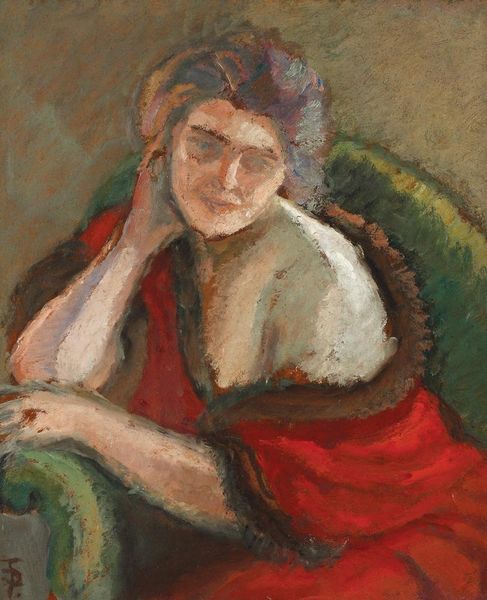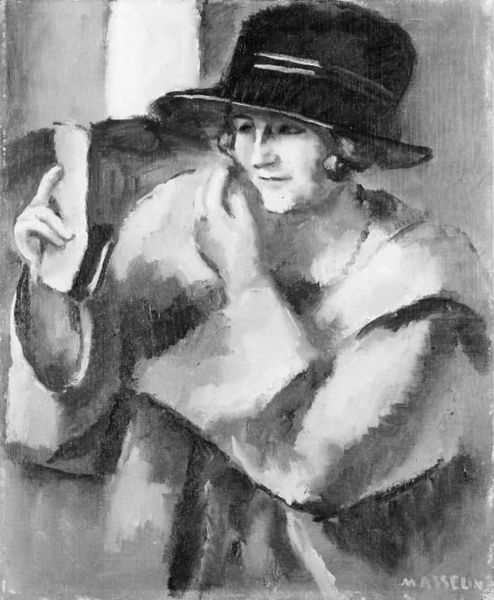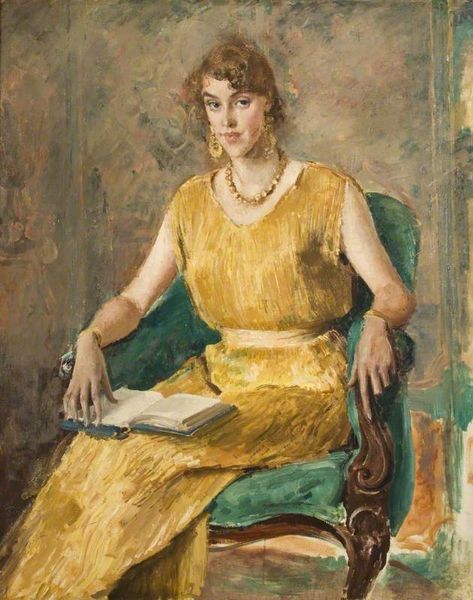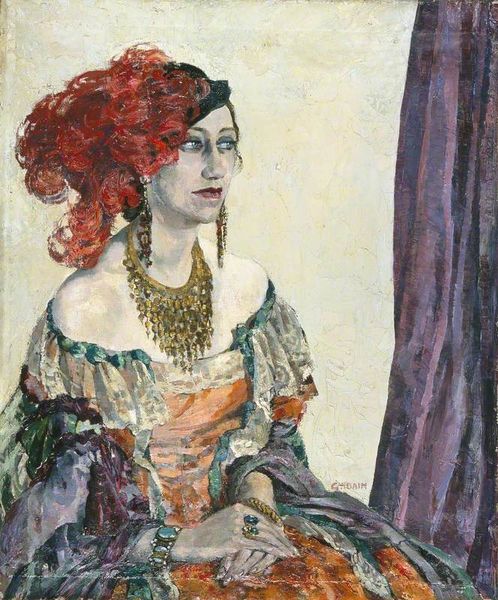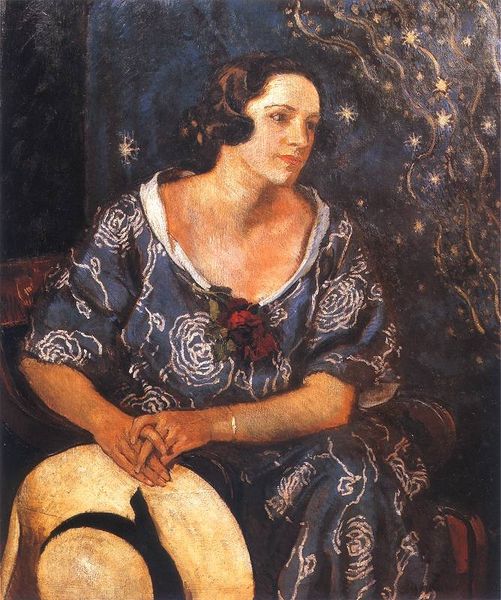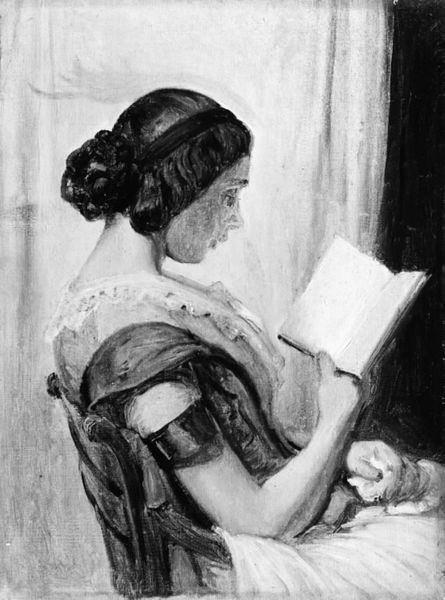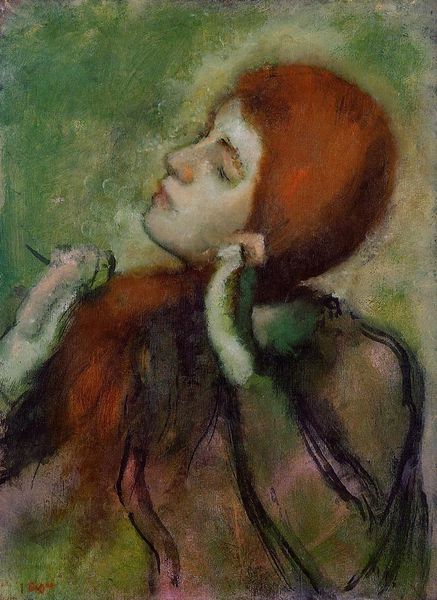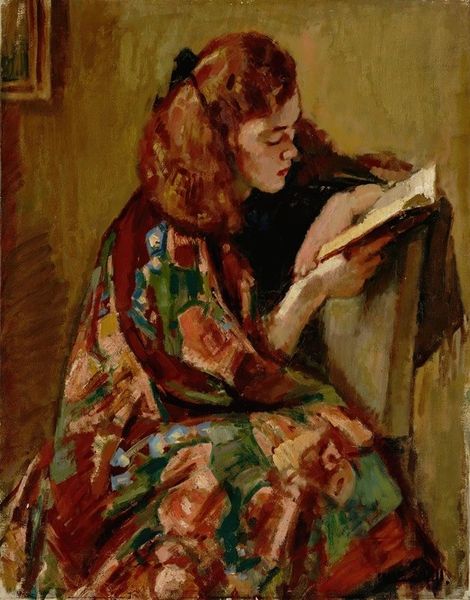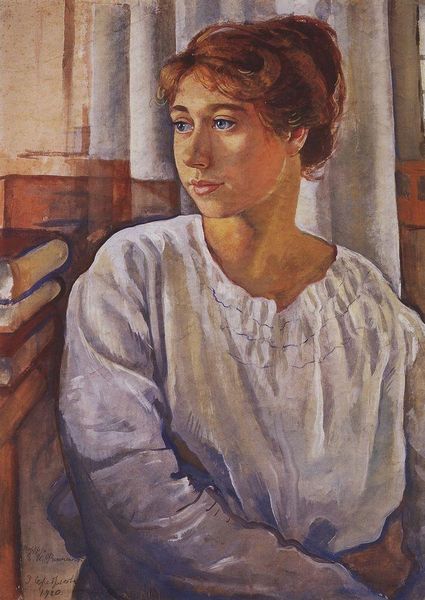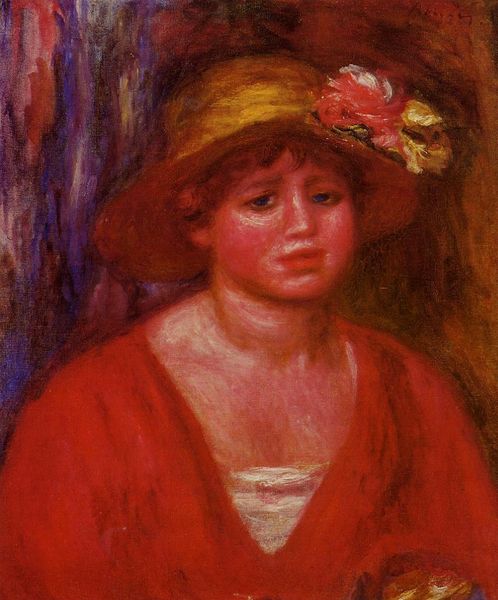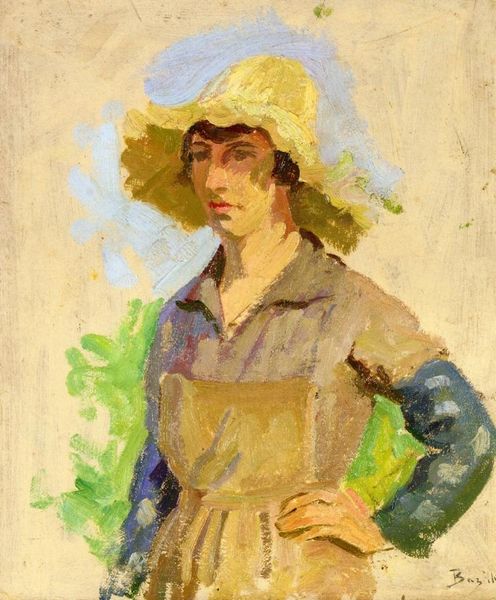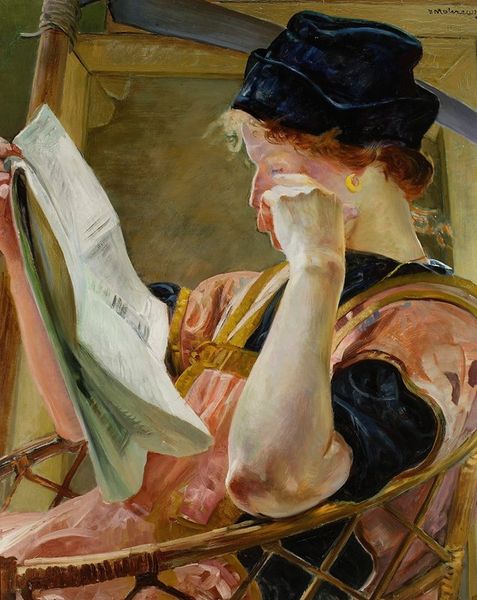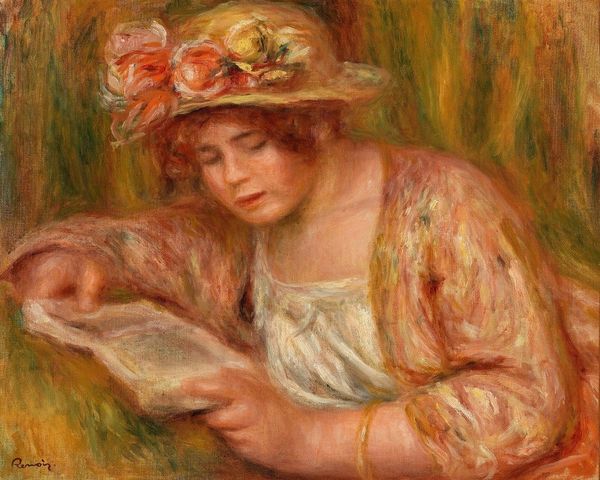
painting, oil-paint
#
portrait
#
painting
#
oil-paint
#
oil painting
#
expressionism
#
genre-painting
#
modernism
#
realism
Dimensions: 92 x 73 cm
Copyright: Public domain US
Editor: We’re looking at "Redheaded Woman Reading" from 1922, an oil painting by Tamara de Lempicka. It's remarkably tactile, I can almost feel the texture of her dress. The palette seems restrained, muted tones mostly, which only makes the red hair pop that much more. How would you interpret this piece through a more formal lens? Curator: Consider the planar organization and the almost sculptural handling of form. Lempicka employs a deliberate geometry; observe how the figure is constructed with clear, almost crystalline facets of light and shadow. This fragmentation creates a certain tension and visual interest. Does the book serve as merely a prop or is it formally relevant, integral to the structural organization? Editor: I think the book provides balance within the composition and serves as an extension of her body and a frame within a frame. The color story feels cohesive despite what might be disharmonious on their own. Can you explain your perspective a bit further? Curator: The color relationships, even in their apparent restraint, reveal Lempicka's sophisticated control of tone. The muted ochres and browns act as a grounding force, allowing the vibrant red of the hair and touches of color on her clothes to vibrate intensely. Ask yourself if that is indeed expressionism or leaning into a post-cubist reality that expresses tension? Do you agree with the relationship of colors to forms that create spatial dimensions in the composition? Editor: That's insightful; viewing the work as less a portrait and more an exercise in structure, tone, and chromatic relationship shifts my perception significantly. Thank you for pointing that out. Curator: It's precisely through that lens, through analyzing the internal logic of forms and colours, that the true essence of this painting reveals itself. This way, we may engage beyond mere subject matter and towards visual ideas.
Comments
No comments
Be the first to comment and join the conversation on the ultimate creative platform.
